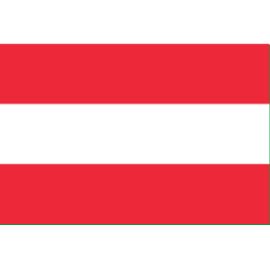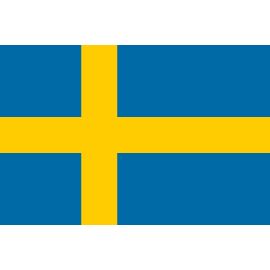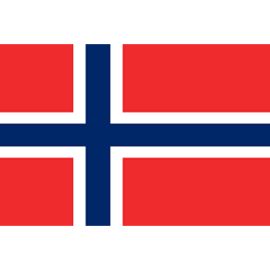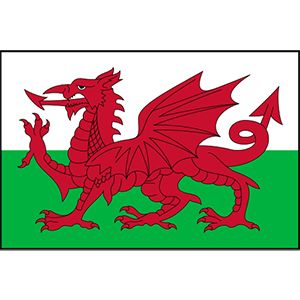Anuncios
relacionados con: LatviaOur comprehensive guide to the best Latvia Resorts for 2022. Fast & Simple.
Convenient and flexible cancellation up to 24 hours before your tour — no questions asked. Need to change your plans? We offer free cancellation up to 24 hours before your activity.
Save money & book with Tripadvisor, the world's largest travel website. Find discounts on the best Hotels In Sigulda Latvia. Tripadvisor helps you spend less.
Book with a small downpayment and pay the remaining amount at the rental desk upon arrival. Book with a small down-payment and free cancellation up to 48 hours before the pick up
Resultado de búsqueda
- Temporada regularUEFA Nations League
 Armenia7 Sep,12:00 EDT
Armenia7 Sep,12:00 EDT Latvia
LatviaOtros partidos
Euro 2016 Qualifiers FINAL 15 oct. @ 
Turkiye P0 - 4Euro 2016 Qualifiers FINAL 18 nov. vs 
Croacia P0 - 2UEFA Nations League 14:45 EDT 10 sep. vs 
Faroe Islands Grupo B J G E P Ptos. 1  Francia
Francia8 7 1 0 22 2  Holanda
Holanda8 6 0 2 18 3  Grecia
Grecia8 4 1 3 13 4  Republic of Ireland
Republic of Ireland8 2 0 6 6 5  Gibraltar
Gibraltar8 0 0 8 0 Grupo C J G E P Ptos. 1  Inglaterra
Inglaterra8 6 2 0 20 2  Italia
Italia8 4 2 2 14 3  Ukraine
Ukraine8 4 2 2 14 4  North-Macedonia
North-Macedonia8 2 2 4 8 5  Malta
Malta8 0 0 8 0 Grupo E J G E P Ptos. 1  Albania
Albania8 4 3 1 15 2  Czech Republic
Czech Republic8 4 3 1 15 3  Polonia
Polonia8 3 2 3 11 4  Moldova
Moldova8 2 4 2 10 5  Faroe Islands
Faroe Islands8 0 2 6 2 Grupo F J G E P Ptos. 1  Bélgica
Bélgica8 6 2 0 20 2  Austria
Austria8 6 1 1 19 3  Suecia
Suecia8 3 1 4 10 4  Azerbaijan
Azerbaijan8 2 1 5 7 5  Estonia
Estonia8 0 1 7 1 Latvia (/ ˈ l æ t v i ə / ⓘ LAT-vee-ə, sometimes / ˈ l ɑː t v i ə / LAHT-vee-ə; Latvian: Latvija Latvian pronunciation:), officially the Republic of Latvia, is a country in the Baltic region of Northern Europe. It is one of the three Baltic states, along with Estonia to the north and Lithuania to the south.
Letonia (en letón: Latvija ⓘ ), oficialmente República de Letonia ( Latvijas Republika ), es un país soberano de Europa Septentrional, constituido en estado social y democrático de derecho y cuya forma de gobierno es la república parlamentaria. Es uno de los veintisiete Estados soberanos que forman la Unión Europea.
- Overview
- Land
- Relief, drainage, and soils
- Climate
- Plant and animal life
- Ethnic groups, languages, and religion
- Settlement patterns
- Demographic trends
Latvia, country of northeastern Europe and the middle of the three Baltic states.
Latvia, which was occupied and annexed by the U.S.S.R. in June 1940, declared its independence on August 21, 1991. The U.S.S.R. recognized its sovereignty on September 6, and United Nations membership followed shortly thereafter. Latvia was admitted to the North Atlantic Treaty Organization (NATO) and the European Union (EU) in 2004. The capital and chief city is Riga.
Latvia lies along the shores of the Baltic Sea and the Gulf of Riga, and it is bounded by Estonia to the north, Russia to the east, Belarus to the southeast, and Lithuania to the south.
Latvia is essentially an undulating plain, with fairly flat lowlands alternating with hills. The eastern part of the country is more elevated, its most prominent feature being the Central Vidzeme Upland, which reaches a maximum elevation of 1,020 feet (311 metres). In the southeast the highest point is Lielais Liepukalns (947 feet [289 metres]), which is part of the Rāzna National Park territory. The Kurzeme (Courland) Upland in the west is divided by the Venta River into western and eastern parts. Between the Central Vidzeme and Latgale uplands in the southeast lies the East Latvian Lowland, partly crossed by moraine ridges that impede drainage. There are numerous peat bogs in this area.
Britannica Quiz
You Name It!
Latvia contains a multitude of rivers that drain into the Baltic Sea. The largest are the Western Dvina, locally called the Daugava (with a total length of 222 miles [357 km] in Latvia), the Gauja (Russian: Gauya), the Venta, and the Lielupe. Amid the hills, many of which are forested, are numerous lakes, some measuring up to about 12 square miles (30 square km). Latvia’s soils are predominantly podzolic, though calcareous soils characterize the Semigallia (Zemgale) Plain, located just east of the Eastern Kurzeme Uplands. Swampy soils are found in some areas, particularly the East Latvian Lowland. Erosion is a problem in the more intensely cultivated hilly areas.
The climate is influenced by the prevailing southwesterly winds coming from the Atlantic. Humidity is high, and the skies are usually cloudy; there are only about 30 to 40 days of sunshine per year. Average precipitation usually exceeds 20 inches (about 500 mm) on the lowlands and may approach or exceed 30 inches (about 760 mm) on the uplands. The frost-free season lasts about 125 to 155 days. Summers are often cool and rainy. The mean temperature in June is in the mid-60s F (about 17 °C), with occasional jumps into the mid-90s F (about 34 °C). Winter sets in slowly and lasts from the middle of December to the middle of March. The mean January temperature ranges from the upper 20s F (near −2 °C) on the coast to the lower 20s F (about −7 °C) in the east. There are occasional extreme temperature drops into the −40s F (about −40 °C).
Students save 67%! Learn more about our special academic rate today.
More than half of Latvia is covered with forests, meadows, pastures, swamps, and wasteland. Forests account for more than one-third of the total area, and about one-tenth of the forests are cultivated. The larger forest tracts are in the northern part of the Kurzeme Peninsula, along the banks of the Western Dvina, and in the northeast, where conifers (pine and spruce) predominate. Of the deciduous species, birch, aspen, and alder are the most prevalent. Meadows are found both in the river valleys and among the hills.
Latvia’s fauna consists of squirrels, foxes, hare, lynx, and badgers. Somewhat less common are ermines and weasels. Conservation measures have resulted in an increase in the number of deer and elk, and beavers have been reintroduced to Latvia. The country’s bird population includes the nightingale, oriole, blackbird, woodpecker, owl, grouse, partridge, finch, tomtit, quail, and lark. Storks and herons are usually found in the marshes and meadows.
Before Soviet occupation in 1940, ethnic Latvians constituted about three-fourths of the country’s population. Today they make up about three-fifths of the population, and Russians account for about one-fourth. There are small groups of Belarusians, Ukrainians, Poles, Lithuanians, and others. The official language of Latvia is Latvian; however, nearly one-third of the population speaks Russian. Smaller numbers speak Romany, the Indo-Aryan language of the Roma (Gypsies), and Yiddish, a Germanic language. The majority of Latvians adhere to Christianity—mainly Lutheranism, Roman Catholicism, and Eastern Orthodoxy. About one-fourth of Latvians consider themselves nonreligious.
Latvia had a significant Jewish population—estimated at more than 90,000 in the 1930s—until the Soviet and German occupations during World War II, when tens of thousands of Latvian Jews fled the country, were deported to prison camps or concentration camps, or were killed. Nazi forces were responsible for between 65,000 and 75,000 of these deaths. By war’s end, only several thousand Latvian Jews remained.
Latvia’s rural population decreased after World War II, largely because of poor socioeconomic and political conditions, while its urban population increased steadily. By the early 2000s more than two-thirds of the country’s population lived in urban areas. Riga is the most populous city, followed by Daugavpils and Liepāja.
A major challenge for Latvia in the early 1990s was to offset the aging of its population, a serious problem that had existed even before the country’s independence and that was the result largely of birth rates that were not high enough to ensure population replacement. An attempt was also made to increase the percentage of the population made up ...
Visión general. Capital: Riga. Lenguas oficiales de la UE: letón. Estado miembro de la UE: desde el 1 de mayo de 2004. Moneda: euro (€). Miembro de la zona del euro desde el 1 de enero de 2014. Schengen: miembro desde el 21 de diciembre de 2007. Cifras : Extensión geográfica: 64 586 km 2.
In the northeastern corner of Europe, Latvia is the center of the three Baltic states, flanked by Estonia and Lithuania. It sits across the sea from Sweden, south of Finland, and just northeast of Germany. Having lived by the banks of the Baltic Sea for several millennia, Latvia is home to restless minds and talented people. Our DNA.
22 de ago. de 2023 · 22 August 2023. Situated in north-eastern Europe with a coastline along the Baltic Sea, Latvia has borders with Estonia, Russia, Belarus and Lithuania. It has linguistic links with Lithuania to...














































